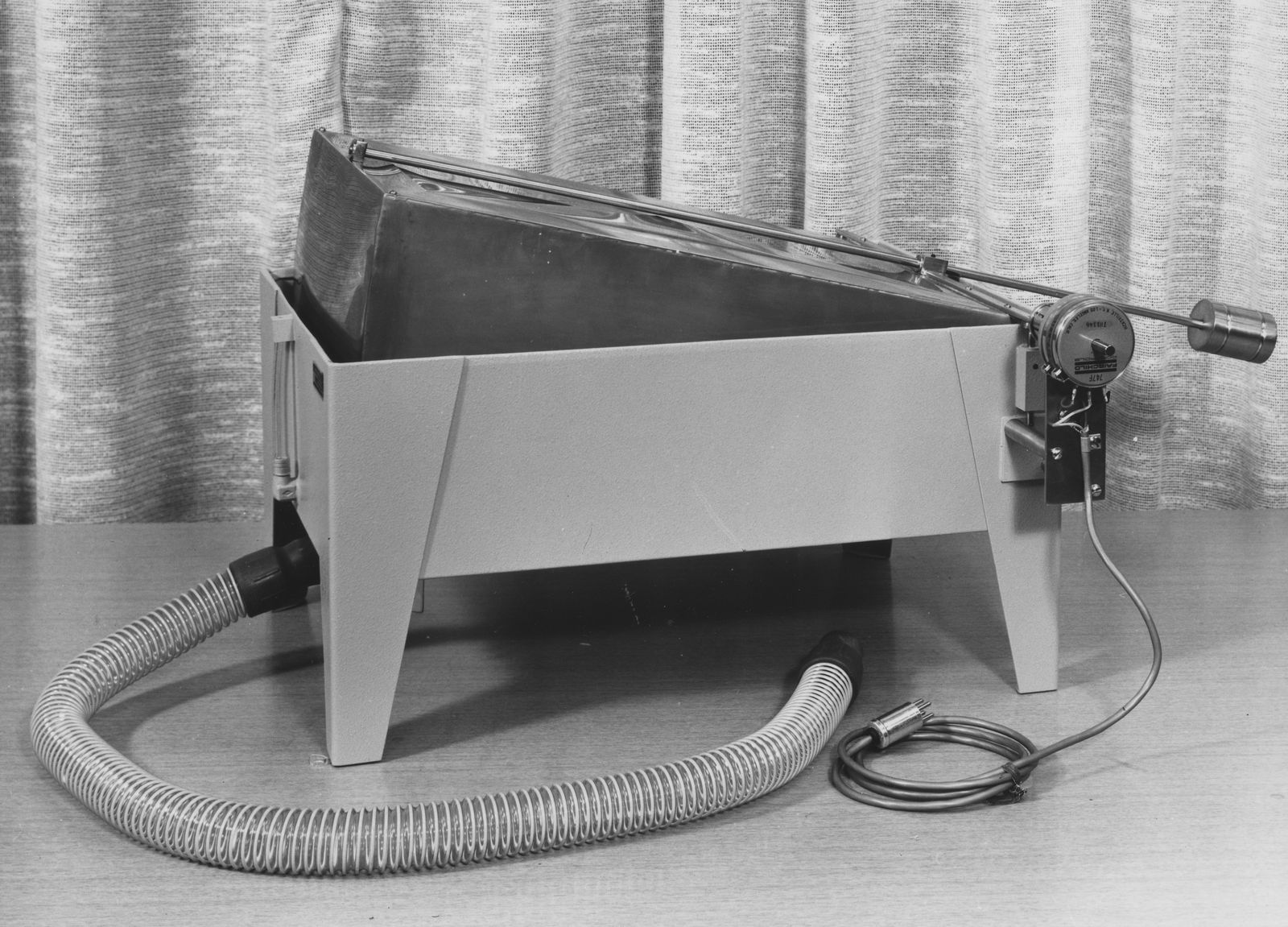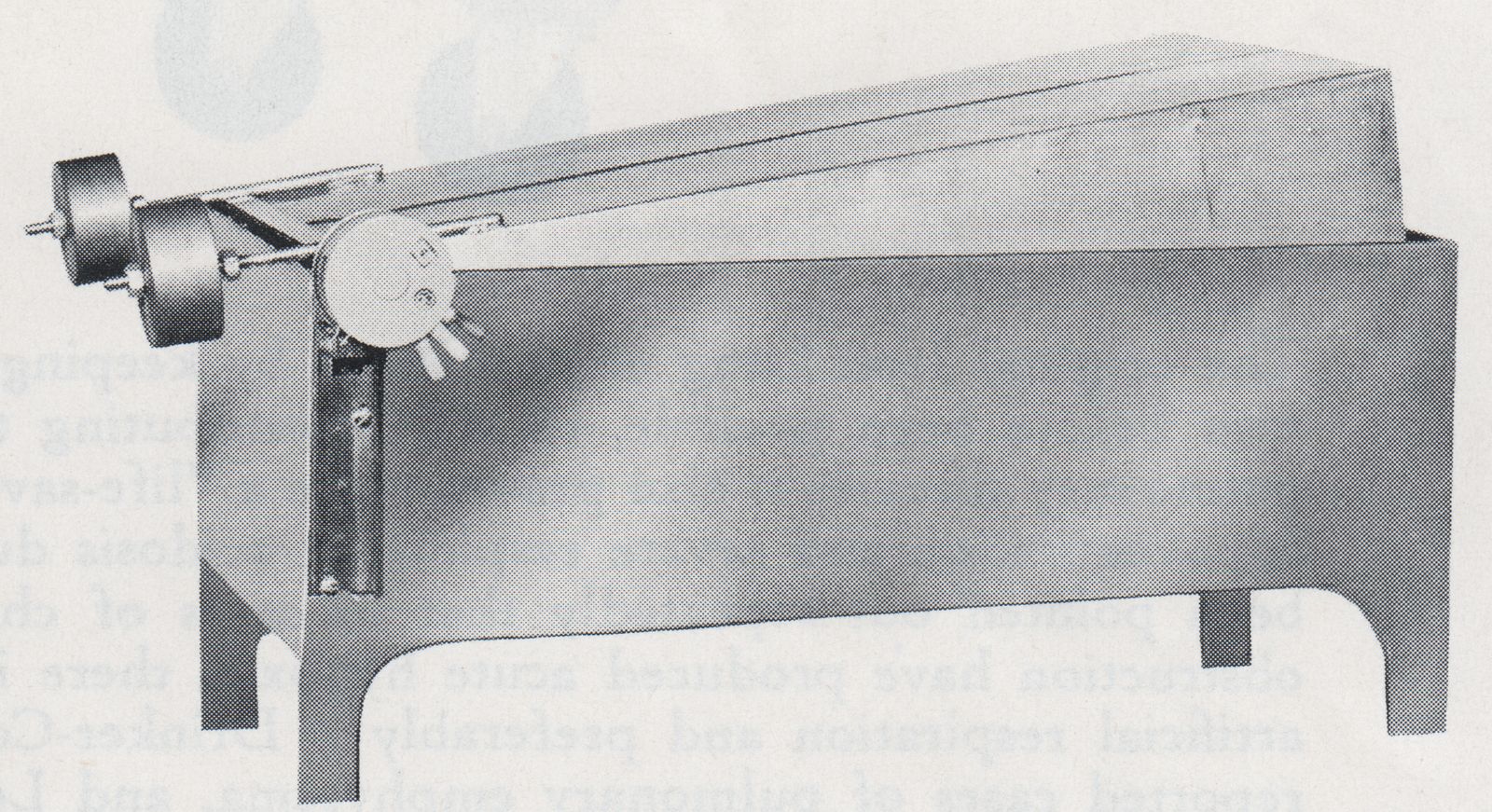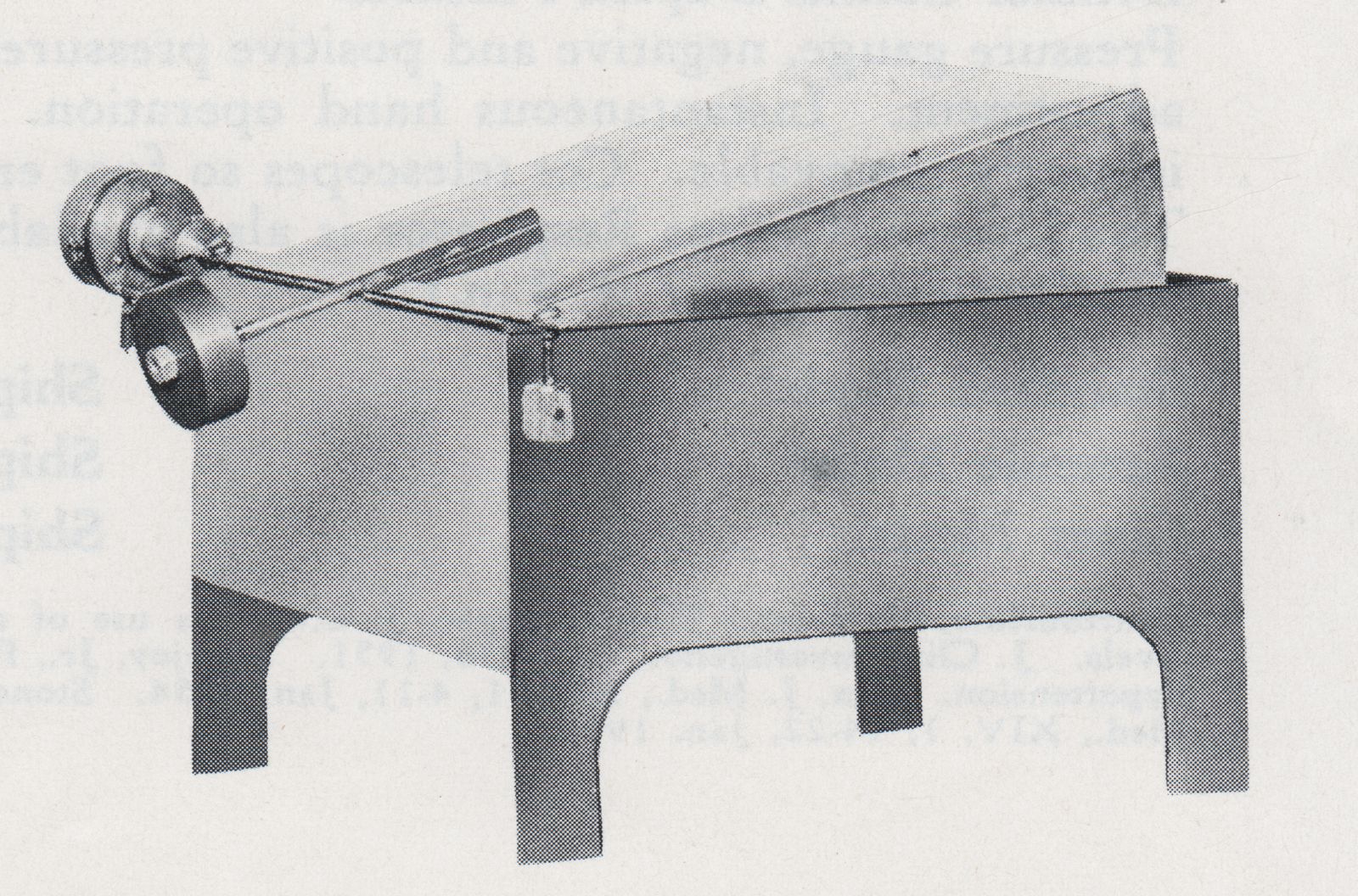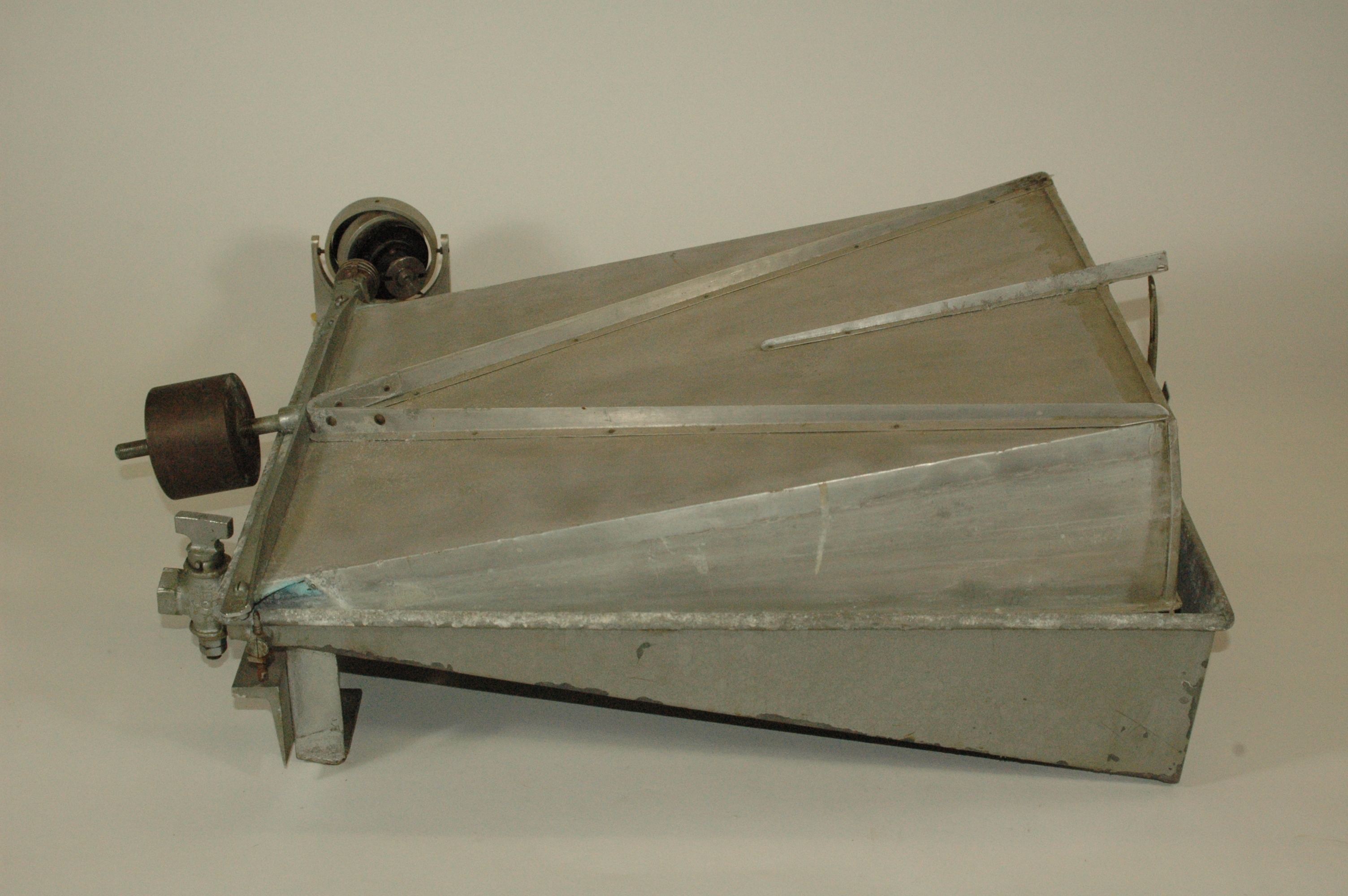
From a publicity photo dated 1967.

From a publicity photo dated 1967.


All Krogh spirometers were built to order and available in a variety of configurations with a variety of accessories. From ‘A Catalog of Pulmonary Function Equipment and Accessories’, W. E. Collins Inc., 1966, page 47.

Found on the Francis A. Countway Library of Medicine website. Warren Anatomical Museum Catalog Number: 21643. This wedge Krogh spirometer was manufactured by the Doelcam Corporation between 1950 and 1980 and was used in conjunction with experimental whole plethysmograph (WAM 21595) for respiration research in the Department of Physiology at the Harvard School of Public Health. It was donated to the Warren Anatomical Museum by Dr. Stephen H. Loring in December 2015. 53 W x 56 D x 22 H cm.
Found on the Steno Museum Collections Website. Size L: 95x45xH: 53cm. Manufactured by Kifa, Stockholm, Sweden likely around 1973. Described as a “stainless steel vessel which can tilt up and down. On top of the container is a cross-shaped steel frame provided with left at one end and writes in the other end. At one end of the vessel in which the signer is mounted a roller wound with paper for marking. Connected oxygen tank with mask.”
Found on the Steno Museum Collections Website. Size L: 95x45xH: 53cm. Manufactured by Kifa, Stockholm, Sweden likely around 1973. Described as a “stainless steel vessel which can tilt up and down. On top of the container is a cross-shaped steel frame provided with left at one end and writes in the other end. At one end of the vessel in which the signer is mounted a roller wound with paper for marking. Connected oxygen tank with mask.”
Found on the Steno Museum Collection website. Described as “a black stationary bike without wheels but instead mounted on four obliquely positioned legs, standing in a black iron frame on the floor.” It appears to be electromagnetically braked and is attributed to a design of August Krogh. Manufactured by the Copenhagen Electric Motor Factory between 1910 and 1920.
Found on the Steno Museum Collections website. It’s description (translated from Danish by Google): “Vippespirometeret is of the type which August Krogh constructed in the early 1900s. This vippespirometer was purchased and used by the Department of Physiology, University of Aarhus in 1970. Here it was used in studies in climate chambers for the determination of “closing volume” that is the volume of the lung, wherein the first airway collapse during exhalation, and a measure of the airway condition. The spirometer was used for the first Danish published study using this method.” Size 81x36x40cm. Dated by the museum as manufactured by Kifa, Stockholm, Sweden in 1940 although this date may be in error. I suspect but cannot be sure that the electrical wiring is for a water heater in order to keep the spirometer at body temperature.
Found on the Steno Museum Collections website. It’s description (translated from Danish by Google): “Vippespirometeret is of the type which August Krogh constructed in the early 1900s. This vippespirometer was purchased and used by the Department of Physiology, University of Aarhus in 1970. Here it was used in studies in climate chambers for the determination of “closing volume” that is the volume of the lung, wherein the first airway collapse during exhalation, and a measure of the airway condition. The spirometer was used for the first Danish published study using this method.” Size 81x36x40cm. Dated by the museum as manufactured by Kifa, Stockholm, Sweden in 1940 although this date may be in error. I suspect but cannot be sure that the electrical wiring is for a water heater in order to keep the spirometer at body temperature.
From “The respiratory mechanism in pneumonia”, by Newburgh LH, Means JH, Porter WT, The Journal of Experimental Medicine, Volume 24, page 583, 1916. The spirometer is a Krogh type.
“A portion of the apparatus employed is shown in Text-Fig. 1. The tracheal canulla of the animal in which the respiratory reaction was to be measured was joined to a rubber tube placed between two Tissot valves connected in such a way that the animal breathed into a spirometer and out of a bottle connected in turn with the spirometer, so that the lungs, the spirometer, the bottle and the connecting tubes formed a closed system. Evidently by this arrangement the volume of air passing into and out of the chest was recorded by the spirometer, while the carbon dioxide exhaled by the animal constantly accumulated in the closed system. Samples of the air thus enriched with carbon dioxide were withdrawn at frequent intervals by the mercury tubes shown in Text-fig. 1. As each sample was taken, a mark was made on the spirometer record (the electric time-signal is not shown in Text-fig. 1). As the carbon dioxide in the respired air increased, the spirometer curve became deeper, until the maximum was reached.”
From Nederlands Tijdschrift voor Geneeskunde, May 21, 1932, page 2465. “Oorspronkelijke Stukken. Bewusteloosheir, schijndood en hun behandeling met de inademing van Koolzuur-Zurrstofmengsels” by Dr. G C E Burger and Dr. M H Tromp.
Diagram of a breathing system containing two Krogh spirometers (one with soda lime CO2 absorbant, one without) and a Tissot spirometer. Designed to measure tidal and minute ventilation while breathing different levels of CO2 up to 10 percent.